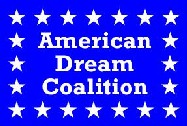
 |
|
|
Air Pollution & the American DreamThirty years ago, air pollution was a serious concern in many U.S. cities, leading to major problems with health and visibility. Automobiles were particularly responsible for emitting carbon monoxide, hydrocarbons, nitrogen oxides, particulates, and lead. The Clean Air Act of 1970 focused on reducing pollution by requiring auto manufacturers to produce successively cleaner cars. This has produced amazing results. Although Americans drive two-and-one-half times as many miles as they did in 1970, total auto emissions of hydrocarbons have been reduced by close to two thirds, nitrogen oxides by 20 percent, carbon monoxide by nearly 50 percent, and particulates by more than two thirds. Lead emissions are now close to zero. All of these trends are continuing and the air in most cities is expected to be cleaner in the future than it is today. Despite the success of controlling pollution at the tailpipe, some people want to reduce pollution by discouraging people from driving. In 1996, the Environmental Protection Agency started a "transportation partners" program that gave millions of dollars to anti-automobile groups to try to reduce the amount of driving Americans do. There is little evidence that such programs will succeed in reducing driving. Instead, they are more likely to increase air pollution because many anti-auto programs focus on increasing congestion. Cars pollute more in congested traffic for three reasons.
Programs that attempt to discourage driving by increasing urban densities, installing so-called traffic calming devices, or diverting highway funds to other uses will all lead to more congestion and therefore more air pollution. Even if a few people drive a little less, the total amount of pollution is likely to be significantly increased. On the other hand, building new freeway capacity can be one of the most important pollution-reducing investments a region can make. Unfortunately, the EPA discourages regions with serious air pollution problems from adding roadway capacity. Where air pollution remains serious, we don't have to wait for new, cleaner cars or added freeway capacity to get cleaner air. Air quality can be improved much faster by relying on incentives instead of regulations. Such incentives could come in the form of a pollution emissions fee or by giving people tradable permits for the amount of pollution they currently produce. People could save money (or sell part of their pollution permit) if they bought a cleaner car or installed pollution-reducing equipment. Hybrid gas-electric cars such as the Toyota Prius and Honda Insight are nearly twice as fuel efficient as other cars, but they produce less than 10 percent as much pollution. Much of the pollution reduction comes from a simple device designed to insure that the catalytic converter runs at its optimal temperature at all times. If incentives created a market for pollution-reducing equipment, it would be easy for someone to design and sell a catalytic converter heater for existing cars. Engine emission controls, not human behavior modification, is the key to reducing pollution. Existing technologies have already done much to reduce pollution. Even faster results can be obtained by giving people incentives to reduce the amount of pollution they generate. |